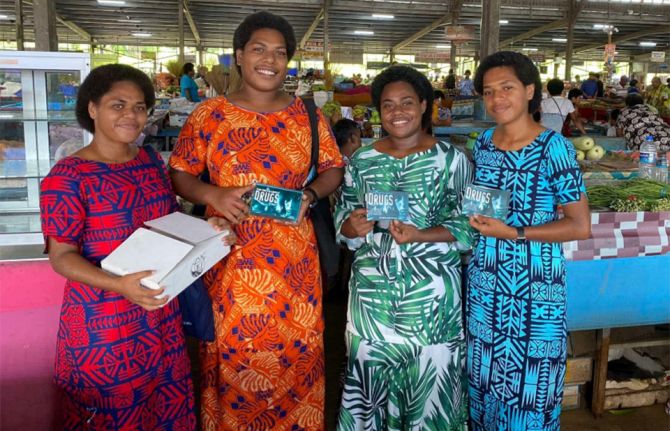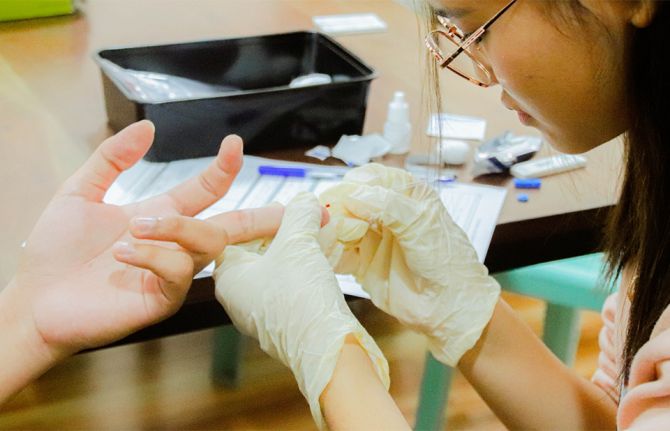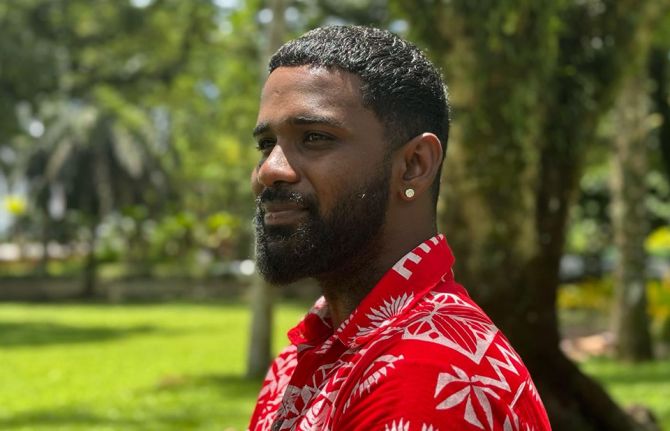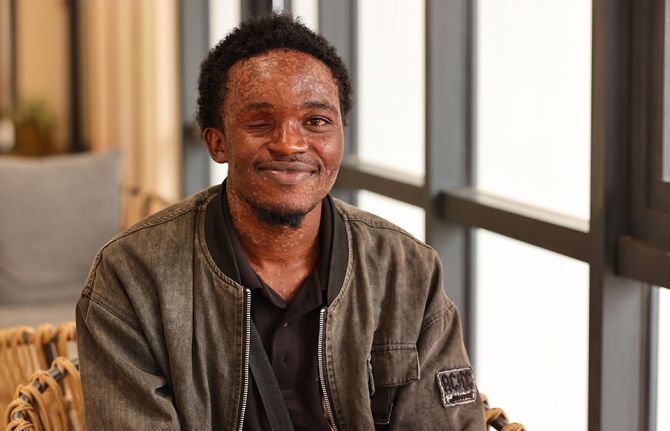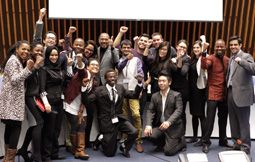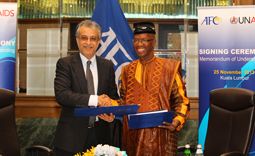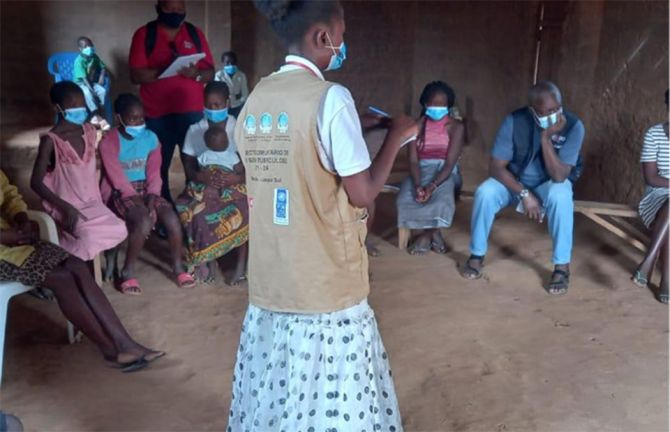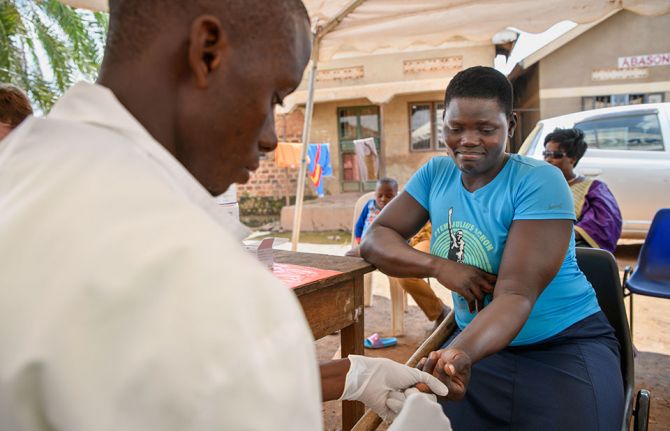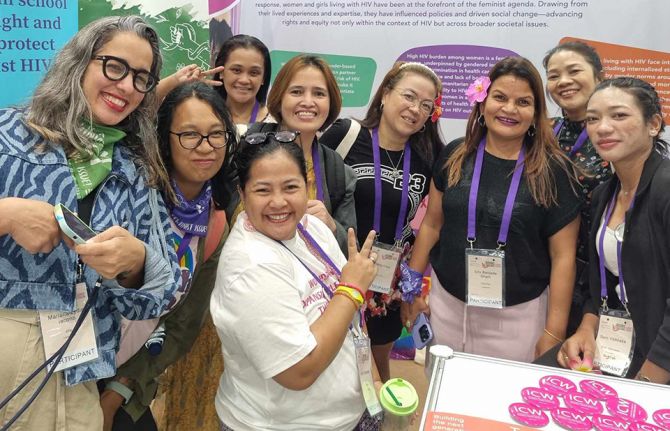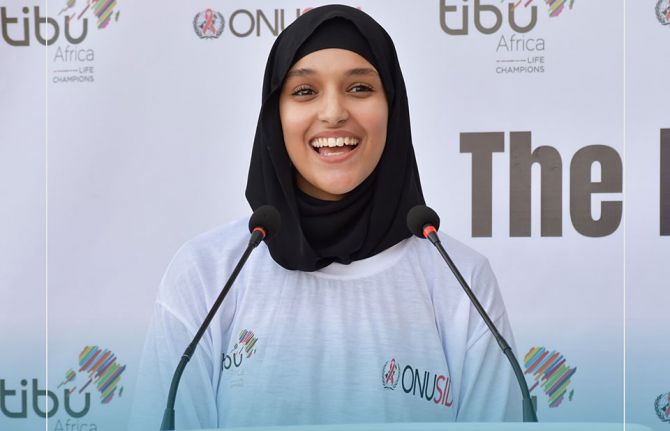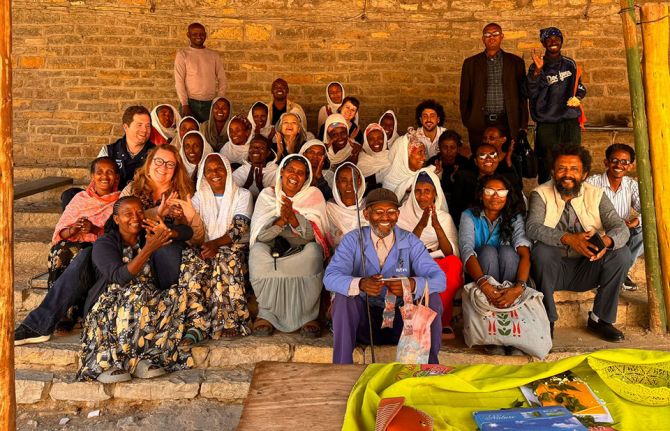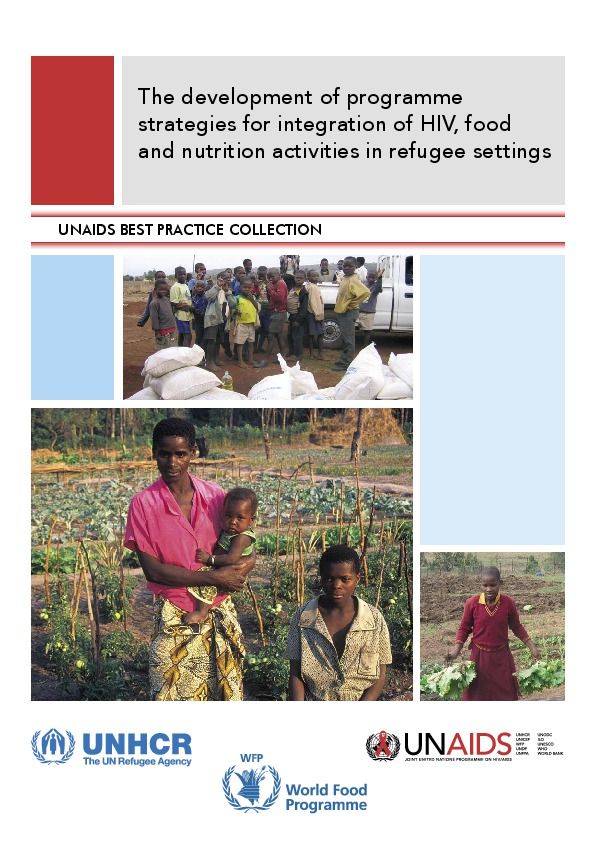
Feature Story
UNAIDS Cosponsors out in force for 9th ICAAP
09 August 2009
09 August 2009 09 August 2009
The 10 UNAIDS Cosponsors are presenting a strong showing as thousands of delegates converge in Bali, Indonesia, to share ideas, knowledge, best practices, lessons learned and research findings at the 9th International Congress on AIDS in Asia and the Pacific (ICAAP).
The Cosponsors are an integral part of the UN’s response to the global AIDS epidemic and UNAIDS brings together their efforts and resources.
Echoing the Congress theme, ‘Empowering people - strengthening networks’, the Cosponsors are organising and presenting symposia, skills-building workshops and satellite meetings drawing together a number of participants from a range of disciplines with the aim of helping to build and nurture partnerships to bolster the AIDS response in the region.
A number of events are joint Cosponsor initiatives. For example, the Symposium on ‘HIV prevention and most at risk young people’, taking place on 10 August, is sponsored by UNFPA, UNICEF, UNESCO, UNDP, WHO and UNAIDS. The symposium, hosted by the Asia Pacific Regional UN Coordination Group on Most at Risk Young People, is designed to look at the specific needs of this population which is, in general, not being reached by HIV prevention services. This includes injecting drug users, men who have sex with men and sex workers and their clients. Representatives from these groups will also take part in the panel discussion –one further example of how Cosponsor ICAAP activities are designed to involve key populations.
Other examples of Cosponsor activities include UNDP, ILO and UNAIDS (with the Joint United Nations Initiative on Mobility and HIV/AIDS in South East Asia) collaborating on a joint symposium on 12 August entitled, ‘The Impact of the Financial Crisis on Labour Migration and HIV’ in which they will bring their respective expertise to bear on this pressing international issue. UNHCR, along with UNAIDS, is hosting a satellite session on 12 August called ‘Opportunities and challenges in addressing HIV amongst diverse humanitarian populations’. WFP will use a satellite session on 11 August to explore the vital role of nutrition and food security for people living with HIV and will, along with its partners, look at ‘Models for integrating nutrition and food security into HIV care, support and treatment in the Asia Region: Opportunities and challenges’.
The World Bank is also championing the screening, on 10 August, of the film, Suee (Needle) by Cannes Film Festival award winner, Sai Paranjpye, which deals with the lives of injecting drug users and the anti-AIDS stigma they face. The film emerged from the South Asia Region Development Marketplace, a grant programme spearheaded by the Bank and supported by a range of partners including UNAIDS, UNICEF, UNODC and UNDP.
There is an extremely broad range of other Cosponsor activities taking place over the five days of the Congress and a number of these events will be highlighted on the UNAIDS website as the ICAAP progresses.
UNAIDS and its ten Cosponsors work to provide technical support to countries to assist them in the implementation of their national AIDS plans. A ‘division of labour’ guides the technical support provided to enhance coordination, avoid duplication and provide the best assistance available. Each of the Cosponsor organizations leads in at least one technical area. These organizations are:
Office of the United Nations High Commissioner for Refugees (UNHCR)
United Nations Children's Fund (UNICEF)
United Nations Development Programme (UNDP)
United Nations Population Fund (UNFPA)
United Nations Office on Drugs and Crime (UNODC)
International Labour Organization (ILO)
United Nations Educational, Scientific and Cultural Organization (UNESCO)

Feature Story
Addressing the HIV-related needs of “people on the move”
19 June 2009
19 June 2009 19 June 2009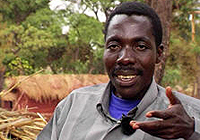
Noe Sebisaba and his STOP SIDA NGO are helping to mitigate the impact of HIV in Burundi
Courtesy of UNHCR
Noe Sebisaba knows how to turn an adverse situation into something life-affirming. In 1996 he and his family were forced to flee a Burundi in turmoil and ended up in the Kanembwa refugee camp in Tanzania. While in the camp, in 1998, he discovered that he was living with HIV. His wife, who was also HIV positive, died of an AIDS-related illness. On World AIDS Day 2001, at an event organized by the UN refugee agency UNHCR, Mr Sebisaba decided to openly declare his own HIV status, the first known African refugee to do so. He has never looked back. As he says, “I decided to let HIV know; ‘I’ll control you, you’re not going to control me’…I was tired of silence and I found a new reason to live. To challenge HIV and preach forgiveness and love.”
Although initially rejected by his family and community, the disclosure helped galvanize him to challenge the stigma and discrimination rampant among refugees and the host population in Tanzania. He developed a grassroots, community organization, STOP SIDA (STOP AIDS), to intensify the involvement of refugees and the local community in the AIDS response and to disseminate HIV awareness messages at public events, through individual contacts, visits and peer groups.
With my decision to say openly that I’m living with HIV, I’ve done my part to try to change the face of the virus. I think I’ve shown that it’s not an automatic death sentence and that you can still lead a rich life.
Noe Sebisaba founder of STOP SIDA
Active in a number of camps across western Tanzania, STOP SIDA distributed educational materials and advocated support and care for those infected with and affected by the virus. Using himself as an example, Mr Sebisaba found a unique way to help individuals and communities become agents of change in challenging HIV. And he was able to confront some of the particular vulnerabilities faced by refugees whose lives have been uprooted due to conflict, persecution or violence.
There are myriad factors that can increase the vulnerability to HIV of the many millions of refugees and internally displaced people around the world. They often lose their source of income and may have to resort to high-risk behaviour to satisfy their needs. Health and education services often lapse and sources of information on HIV prevention and treatment provision can be disrupted. Social and sexual norms, networks and institutions can also break down and women can be especially vulnerable as rape is often used as a weapon of war during conflicts. In fact, Mr Sebisaba’s wife was herself raped by soldiers in Burundi during the civil war.
The fact that STOP SIDA was able to have an impact in Tanzania was a testament to Mr Sebisaba and his partners’ will and determination. He showed that refugees are not only passive recipients of aid but have powerful coping mechanisms, resilience and ingenuity. Many refugees and members of the surrounding communities participated in STOP SIDA activities and there was a marked increase in take-up of voluntary counseling and testing.
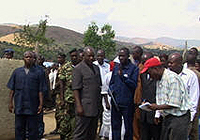
Burundi’s President Pierre Nkurunziza visits STOP SIDA
Courtesy: Noe Sebisaba
In 2005 Mr Sebisaba was repatriated to Burundi by UNHCR and was able to continue his work. In the last seven years the agency has helped nearly 500,000 Burundians return home and supports their continued access to treatment and HIV prevention programmes.
Since 2006, STOP SIDA-NKEBURE UWUMVA has operated in the country, especially in areas with a large number of returnees. Supported by UNHCR and other partners, with offices in the capital Bujumbura and the eastern Cankuzo province, the NGO continues to spread the message of prevention, behaviour change, tolerance and the need for voluntary counseling and testing. Outreach has been especially important in rural areas where AIDS information and anti-stigma messaging find it difficult to penetrate.
In addition, STOP SIDA has become an implementing partner of UNHCR in three camps for Congolese refugees in Burundi where staff use their expertise and experience to help mitigate the impact of the epidemic, including ensuring that clients can receive drug treatment from local hospitals.
Some 450,000 people, both former refugees and those who stayed behind, are being reached by STOP SIDA activities in the eastern provinces of Cankuzo and Ruyigi. In the Congolese camps and surrounding communities some 25,000 are benefiting from the NGO’s initiatives.
UNHCR, the lead UN agency for challenging HIV among refugees and internally displaced people, has co-produced a video about the organization called Love in the time of AIDS, which will be featured during the UNAIDS Programme Coordinating Board thematic session on forced displacement at the Board’s 24th meeting on June 22 to 24. STOP SIDA is highlighted as a best practice of community leadership and mobilization.
What gives Mr Sebisaba the most satisfaction is the feeling that he and his fellow activists have been able to help people accept a positive HIV diagnosis with a degree of hope and optimism and have encouraged people to talk about the epidemic.
“With my decision to say openly that I’m living with HIV, I’ve done my part to try to change the face of the virus. I think I’ve shown that it’s not an automatic death sentence and that you can still lead a rich life. Where I’ve worked, people have been more able to talk openly about having HIV and more people are getting tested. I never have a moment’s regret about disclosing my status. I think it’s really making a difference.”
Addressing the HIV-related needs of “people on th
Cosponsors:
UNHCR
For more on World Refugee Day
Feature stories:
23rd meeting of the Programme Coordinating Board 15-17 December 2008 (15 December 2008)
UNHCR reflects on progress and remaining challenges on World AIDS Day (02 December 2008)
Multimedia:
Love in the time of AIDS (Video)
Publications:
UNESCO and UNHCR publication “Educational Responses to HIV and AIDS for Refugees and Internally Displaced Persons: Discussion Paper for Decision Makers” (pdf, 820.8 Kb.)
Policy Brief: HIV and Refugees (pdf, 265 Kb.)
The need for HIV/AIDS interventions in emergency settings (pdf, 335 Kb.)

Feature Story
Joint action for results: UNAIDS outcome framework, 2009 – 2011
22 April 2009
22 April 2009 22 April 2009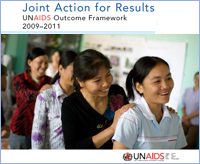
The HIV organizational landscape has evolved and grown more complex over the past decade. UNAIDS, donors and civil society, including networks of people living with HIV, have rightly demanded greater clarity on the relationships between needs, financing, activities and outcomes. Also demanded is greater specificity about the role of UNAIDS and the Secretariat within the wider constellation of actors.
This Outcome Framework, which builds upon the UNAIDS Strategic Framework (2007–2011), will guide future investment and hold the Secretariat and the Cosponsors accountable for making the resources of the UN work for results in countries. It affirms the UNAIDS Secretariat and Cosponsors to leverage our respective organizational mandates and resources to work collectively to deliver results.
Joint action for results: UNAIDS outcome framework, 2009 – 2011 (pdf, 388 Kb)
Joint action for results: UNAIDS outcome framewor
Cosponsors:
Office of the United Nations High Commissioner for Refugees (UNHCR)
United Nations Children's Fund (UNICEF)
World Food Programme (WFP)
United Nations Development Programme (UNDP)
United Nations Population Fund (UNFPA)
United Nations Office on Drugs and Crime (UNODC)
International Labour Organization (ILO)
United Nations Educational, Scientific and Cultural Organization (UNESCO)
World Health Organization (WHO)
World Bank
Publications:
Joint action for results: UNAIDS outcome framework, 2009 – 2011 (pdf, 388 Kb)
Related

Feature Story
New policy brief on disability and HIV
08 April 2009
08 April 2009 08 April 2009
The new policy brief explores the links between HIV and disability and makes recommendations for policy change.
Credit: WHO/Asis Senyal
An estimated 650 million people, or 10% of the world’s population, have a disability. Although people with disabilities are found within the populations at higher risk of exposure to HIV, not much attention has been paid to the relationship between HIV and disability.
For this reason, the Joint United Nations Programme on HIV/AIDS (UNAIDS), the World Health Organization (WHO) and the United Nations Office of the High Commissioner for Human Rights (UNOHCHR) have collaborated on a policy brief that explores the links between HIV and disability and makes recommendations for policy change.
This policy brief discusses the actions needed to increase the participation of persons with disabilities in the HIV response and ensure they have access to HIV services which are both tailored to their diverse needs and equal to the services available to others in the community.
Evidence shows that people with disabilities are at the same or greater risk of HIV infection as non-disabled people. Due to insufficient access to appropriate HIV prevention and support services, persons with disabilities may engage in behaviours which place them at risk of HIV infection, such as unprotected heterosexual or male-to-male sex (including in the context of sex work) and injecting drug use.
The policy brief states that a large percentage of persons with disabilities experience sexual assault or abuse during their lifetime, with women and girls, persons with intellectual impairments and those in specialized institutions, schools or hospitals being at particularly high risk. There is also evidence that in some cultures, persons with disabilities are raped in the belief that this will “cure” an HIV-positive individual.
Persons with disabilities may not benefit fully from HIV and related sexual and reproductive health services because services offered at clinics, hospitals and in other locations may be physically inaccessible, lack sign language facilities or fail to provide information in alternative formats such as Braille, audio or plain language. Also, service providers may lack knowledge about disability issues, or have misinformed or stigmatizing attitudes towards persons with disabilities.
As stated in the 2006 Convention on the Rights of Persons with Disabilities, persons with disabilities have the right to participate in decisions which affect their lives, and should be fully involved in the design, implementation and evaluation of HIV policies and programmes. This is the best way of ensuring these policies and programmes are responsive to their needs.
The policy brief on Disability and HIV calls for HIV services to be inclusive of persons with disabilities. It makes recommendations to governments, civil society and international agencies to eliminate physical, information and communication, economic and attitudinal barriers not only to increases access to HIV programmes, but to assist people in accessing broader health and social services.
Right HAnd Content
Cosponsors:
Feature stories:
Disability and HIV in Jamaica (08 September 2008)
Publications:
Policy brief: Disability and HIV (pdf, 207 Kb)
Related
 Towards a life of dignity for people living with disabilities
Towards a life of dignity for people living with disabilities

15 February 2022

Feature Story
UNAIDS Committee of Cosponsoring Organizations meet
06 April 2009
06 April 2009 06 April 2009
(from left): Joy Phumaphi, Vice President and Head of the Human Development Network, World Bank; Arnauld Akodjenou, Director, Division of Operational Services, UNHCR; Josette Sheeran, Executive Director, WFP; Anarfi Asamoa-Baah, Deputy Director General, WHO; Assane Diop, Executive Director, Social Protection Sector, ILO; Koichiro Matsuura, Director General, UNESCO; Ad Melkert, Administrator ad-interim, UNDP; Ann M. Veneman, Executive Director, UNICEF; Michel Sidibé, Executive Director, UNAIDS; Thoraya Ahmed Obaid, Executive Director, UNFPA; Antonio Maria Costa, Executive Director, UNODC. Paris, 3 April 2009,
The Joint United Nations Programme on HIV/AIDS (UNAIDS) brings together the efforts and resources of ten UN system organizations in the AIDS response. The UNAIDS Committee of Cosponsoring Organizations (CCO) serves as the forum for these Cosponsors to meet on a regular basis to consider matters of major importance to UNAIDS, and to provide input from the Cosponsoring organizations into the policies and strategies of UNAIDS.
On 3 April 2009, the CCO held their first meeting since the appointment of UNAIDS Executive Director Michel Sidibé.
The CCO expressed their full support for “universal access” which Mr Sidibé has outlined as the top priority for UNAIDS as well as the other priority areas of focus which will be set out in the new UNAIDS outcome framework currently being finalized with Cosponsors.
The meeting provided an excellent opportunity to share ideas on supporting countries in achieving their universal access goals. The need for UNAIDS to advocate for an evidence informed AIDS response that is grounded in human rights was accepted by all. Equally important was the need for accountability and results.
The CCO also endorsed the general directions of the 2010-2011 Unified Budget and Workplan including the key priorities and the allocation of resources between the Cosponsors, the Secretariat and Interagency activities. The Secretariat will now work with the Global Coordinators of the Cosponsors to finalize the UBW for the June 2009 meeting of the Programme Coordinating Board.
UNAIDS Committee of Cosponsoring Organizations (CCO)
The CCO comprises representatives from the ten UNAIDS Cosponsors and the UNAIDS Secretariat. It meets twice a year and each Cosponsor rotates as chair of the committee annually, on 1 July.
Right Hand Side
Cosponsors:
Office of the United Nations High Commissioner for Refugees (UNHCR)
United Nations Children's Fund (UNICEF)
World Food Programme (WFP)
United Nations Development Programme (UNDP)
United Nations Population Fund (UNFPA)
United Nations Office on Drugs and Crime (UNODC)
International Labour Organization (ILO)
United Nations Educational, Scientific and Cultural Organization (UNESCO)
World Health Organization (WHO)
World Bank
Related
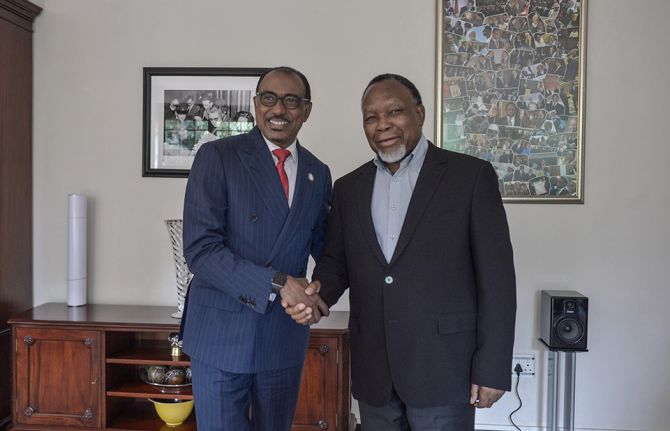 Keeping up the momentum in the global AIDS response
Keeping up the momentum in the global AIDS response

24 April 2019
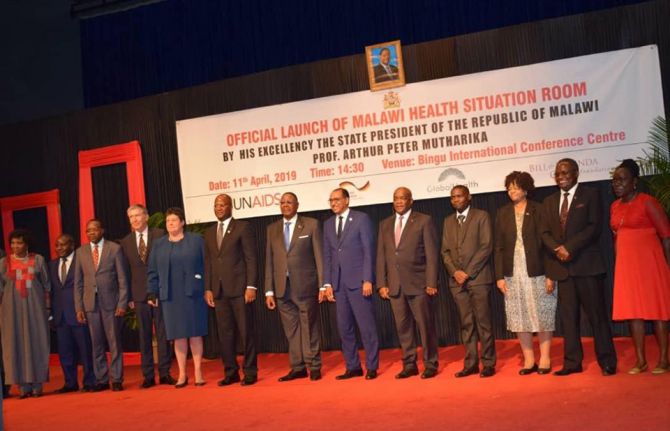 Malawi launches its health situation room
Malawi launches its health situation room

12 April 2019
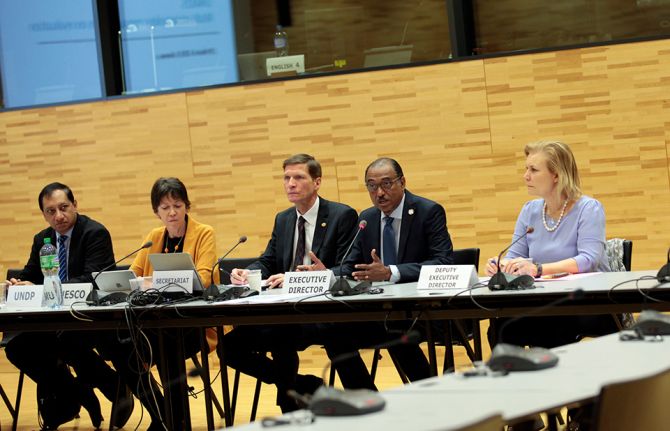 Learning lessons on evaluation
Learning lessons on evaluation

02 April 2019

Feature Story
Highlighting sexual violence on International Women’s Day
05 March 2009
05 March 2009 05 March 2009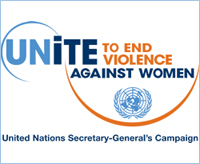
"Women and men: United to end violence against women" is the theme of this year’s International Women's Day which is observed at the United Nations on 5 March 2009 and celebrated internationally on 8 March.
Sexual violence, and the threat of violence, increases women’s vulnerability to HIV and in certain parts of the world is being used as a tactic of war.
UN Secretary-General Ban Ki-moon highlights this in his message marking International Women’s Day: “Violence against women is also linked to the spread of HIV/AIDS. In some countries, as many as one in three women will be beaten, coerced into sex or otherwise abused in her lifetime. Women and girls are also systematically and deliberately subject to rape and sexual violence in war.”
UNAIDS Executive Director Michel Sidibé is also unequivocal on the need to end this violence in his statement: “Violence, including rape and sexual abuse against women and girls should not be tolerated in any circumstances, be it in conflict or war or at home in our own communities.”
Sexual violence in conflict
Sexual violence in conflict has not been a high priority for security institutions and is often overlooked due to stigma and under-reporting. However, the trauma and terror of rape can wound as deeply as bullets and in areas with high HIV prevalence, women are also at risk of being infected with HIV.
Leo Kenny, Team Leader of UNAIDS Security and Humanitarian Response is convinced of the pressing need to address the issue sexual violence among the uniformed services: “While soldiers and uniformed service personnel have been perpetuators of violence against women, they have also been part of the solution and are potential key agents of change if the right programmes are put in place.”
“Educating and involving peacekeepers in addressing sexual violence is important as soldiers have influence among their peers both within the service and the wider community. By changing their perceptions and behaviours it can positively impact the larger population,” Mr Kenny added.
"Violence, including rape and sexual abuse against women and girls should not be tolerated in any circumstances, be it in conflict or war or at home in our own communities."
UNAIDS Executive Director Michel Sidibé
The women who survive sexual violence need access to comprehensive health and counselling services and, where necessary, HIV prevention, treatment, care and support. However the context of civil unrest can result in barriers to universal access to these services.
There is also a need for the millions of uniformed service personnel worldwide to be integrally considered in the scale up towards universal access to HIV prevention, treatment, care and support.
UN Action against Sexual Violence in Conflict
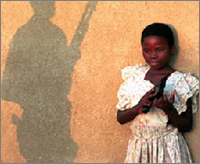 "Women and men: United to end violence against women" is the theme of this year’s International Women's Day which is observed at the United Nations on 5 March 2009 and celebrated internationally on 8 March. Credit: UNAIDS
"Women and men: United to end violence against women" is the theme of this year’s International Women's Day which is observed at the United Nations on 5 March 2009 and celebrated internationally on 8 March. Credit: UNAIDSTwo years ago today, UN bodies came together to form a joint initiative, “UN Action against Sexual Violence in Conflict.” The partnership now stands at twelve UN entities which seek to draw attention to the issue of sexual violence in conflict and the need to do more, to improve the quality of programming to address sexual violence, to increase the coordination of efforts for comprehensive prevention and response services, and to improve accountability as well as to respond effectively to the needs of survivors.
The UN Action initiative is designed to create greater awareness of these abuses and, ultimately, end sexual violence to make the world safer for women and girls.
Three main pillars
The first aspect of this initiative, country level action, involves country level support and efforts to build capacity and train advisers in gender-based violence programming and coordination, as well as support for joint UN programming in selected countries.
Second, “advocating for action”, raises public awareness and generates political will to address sexual violence as part of the broader campaign to “Stop rape now.” The third aspect is the creation of a knowledge hub on sexual violence in conflict and effective responses.
Stop rape now
Rape has deep roots in a historical absence of accountability and UN Action has helped catalyze a paradigm shift: insisting that sexual violence is recognized as a security threat that demands a security response, rather than simply an inevitable byproduct of war.
International Women’s Day
In 1977 the UN General Assembly adopted a resolution inviting Member States to proclaim a United Nations Day for Women's Rights and International Peace—International Women's Day—in recognition of the fact that securing peace and social progress and the full enjoyment of human rights and fundamental freedoms require the active participation, equality and development of women; and to acknowledge the contribution of women to the strengthening of international peace and security.
For women around the world, the symbolism of International Women's Day has a wider meaning: it’s an occasion to celebrate how far women have come in their struggle for equality and an opportunity to unite, network and mobilize for meaningful change.
Highlighting sexual violence on International Women’s Day
International Women's Day 2009 statements:
Statement by UN Secretary-General Ban Ki-moon (pdf, 25 kb)
Statement by UNAIDS Executive Director Michel Sidibé
Statement by WHO Director-General Dr Margaret Chan
Statement by UNESCO Director-General Koïchiro Matsuura (pdf, 61 Kb)
Statement by UNFPA Executive Director, Thoraya Ahmed Obaid
Statement by UNICEF Executive Director Ann M. Veneman
More from UNAIDS Cosponsors on International Women's Day:
Interview with WFP Head of Gender Unit Isatou Jallow
UNDP's special on the occasion of the International Women's Day 2009
UNODC's special on the occasion of the International Women's Day 2009
ILO celebration for International Women's Day 2009
World Bank's special on the occasion of the International Women's Day 2009
Cosponsors:
UNDP - UN Development Programme
UNFPA - United Nations Population Fund
UNHCR - UN High Commissioner for Refugees
UNICEF - United Nations Children Fund
WFP - World Food Programme
WHO – World Health Organization
Partners:
DPA - Department of Political Affairs
DPKO - Peacekeeping Best Practices
OCHA - Coordination of Humanitarian Affairs
OHCHR - United Nations Human Rights
UNIFEM - UN Development Fund for Woman
Feature stories:
HIV prevention and the uniformed services in CIS (08 October 2008)
Contact:
For more information on this campaign contact by email: anna.tarant@unifem.org
External links:

Feature Story
UNHCR reflects on progress and remaining challenges on World AIDS Day
02 December 2008
02 December 2008 02 December 2008UNHCR marked World AIDS Day by reflecting on successes in the agency’s AIDS response while recognizing that there is still a long way to go. UNHCR is a cosponsor of the Joint United Nations Programme on HIV/AIDS (UNAIDS).
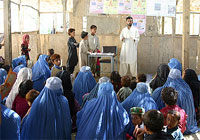
Afghan refugee returnees from Pakistan attend an awareness session on HIV at a UNHCR transit centre. Credit: UNHCR/M.Maguire
A senior UNHCR official said on Monday that while the UN refugee agency had made progress in responding to the challenges of HIV among displaced populations in recent years, there is still a long way to go.
“UNHCR’s HIV and AIDS programmes have come a long way,” said Arnauld Akodjenou, head of UNHCR’s Division of Operational Services, in a special World AIDS Day message for staff. “HIV remains one of the policy priorities of the High Commissioner [for Refugees António Guterres] and protection remains the cornerstone of UNHCR’s HIV and AIDS strategy.”
Akodjenou noted that “Today, we have reached nearly 100 percent coverage in universal precautions in health clinics in refugee camps and safe blood supply to refugees; [while] access to programmes for prevention of mother-to-child transmission increased to more than 60 percent.”
Universal precautions refers to the medical practice, of avoiding contact with patients' bodily fluids such as wearing gloves when collecting or handling blood and body fluids.
He also revealed that anti-retroviral therapy is now available to UNHCR beneficiaries in many refugee camps, and that its coverage for refugees increased to 75 percent in 2008.
But serious challenges remain. “We need to scale up efforts in HIV prevention, care and treatment for our staff, refugees and other persons of concern. We need to work closer with communities to develop community-based HIV prevention and care initiatives while continuing to tackle stigma and discrimination towards people living with HIV. We also need to ensure medical confidentiality in all circumstances,” said Akodjenou.
“Each of us should contribute in our own way to fighting HIV and AIDS. This may include advocating for the inclusion of refugees and other displaced persons in national HIV policies and programmes, tackling the social and economic inequalities and injustices, and protecting and promoting human rights.”
As part of a larger campaign to ensure that policymakers keep their promises on AIDS, this year’s World AIDS Day theme is "Lead – Empower – Deliver." UNHCR offices around the world marked the occasion with a range of events, and many offices reflected on the success of current programmes – such as the launch of a major awareness and prevention campaign in south-east Democratic Republic of the Congo (DRC).
The landmark campaign in Katanga province kicked off in October, when a travelling roadshow visited the town of Moba, on Lake Tanganyika, and the surrounding areas. Staff from UNHCR and partner organizations distributed information about HIV, provided training and offered locals free HIV testing and counselling.
Since 2006, when UNHCR set up field offices in Katanga, tens of thousands of people have returned to their homes from overseas or other parts of the province. But they remain at risk to disease, including HIV, said Philippe Creppy, head of UNHCR’s Moba office.
The campaign in Katanga, which will enlist the help of traditional chiefs and local health workers, will spread awareness about the vital importance of prevention and will also encourage people to take part in free HIV testing and counseling services. The young will be a particular focus. UNHCR will also work with civil society to design and implement HIV programmes.
Creppy said UNHCR and its partners hoped that free counselling and testing, together with the training of medical staff and the development of health facilities and comprehensive policies, would help “put the brakes on the rapid development of this scourge in the territory.” Those who test positive for HIV and who need treatment will receive anti-retroviral drugs.
The campaign, involving more than a dozen non-governmental organizations, will gradually be extended to the rest of the DRC and is scheduled to last five years.
UNHCR reflects on progress and remaining challeng
Cosponsors:

Feature Story
Focus on: HIV and refugees
20 June 2007
20 June 2007 20 June 2007
Conflict and displacement make refugees highly
vulnerable to the risk of HIV. Photo credit: UNAIDS
As UNHCR announces that the number of refugees has increased for the first time since 2002, AIDS remains a key challenge for growing displaced populations.
Displacement of people has an enormous effect on their lives, as well as upon the lives of host communities.
Conflict and displacement make refugees highly vulnerable to the risk of HIV. As refugees struggle to meet their basic needs such as food, water and shelter, women and girls are often forced to exchange sexual services for money, food or protection. And too often refugees are excluded from national AIDS initiatives and policies and subsequently do not have access to vital HIV prevention and treatment services.
Access to basic HIV-related care and support for refugees is also rarely given adequate attention. For women and girls in particular, conflict and displacement heighten their vulnerability to the risk of HIV. During conflict, rape is often used as a weapon of war. Women and girls are also often subject to sexual violence and exploitation in refugee settings.
A policy brief developed by UNAIDS and the UN High Commission on Refugees (UNHCR) focuses specifically on actions required to prevent HIV and mitigate the effect of HIV on refugees and their host communities.
The policy brief focuses on emergency and post-emergency phases and suggests actions for governments, civil society and international partners in order to ensure that refugee and human rights laws are applied, and that the needs of refugees are included into national HIV policies and programmes.
Links:
Read the policy brief on HIV and Refugees
More on Emergency and humanitarian response - Technical Policies of the UNAIDS Programme
Read more stories on HIV and refugees from UNHCR

Feature Story
HIV and refugees
23 February 2007
23 February 2007 23 February 2007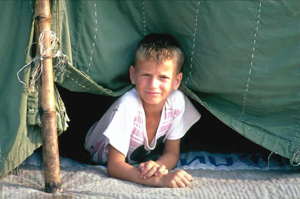
According to the 1951 Convention relating to the Status of Refugees, "A refugee is a person who, owing to a well-founded fear of persecution for reasons of race, religion, nationality or political opinion, is outside the country of his nationality and is unable or, owing to such fear, unwilling to avail himself of the protection of that country". Conflict,
persecution and violence affect millions of people worldwide, forcing them to uproot their lives and seek refuge in a different country.
At the end of 2005, there were 8.4 million refugees worldwide. Of these, approximately 30% were in sub-Saharan Africa, 29% in Central and South-West Asia, North Africa and the Middle East and 23% in Europe.
Displacement of people from their country of origin has an enormous effect on their lives, as well as upon the lives of host communities.
Conflict and displacement make women and children highly vulnerable to the risk of HIV. As refugees struggle to meet their basic needs such as food, water and shelter, women and girls are often forced to exchange sexual services for money, food or protection.
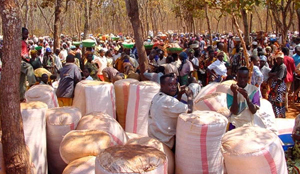
“Women and girls are often disproportionately affected by displacement. They need special attention in terms of HIV including protection from violence and exploitation,” said Dr. Purnima Mane, Director of Policy, Evidence and Partnerships at UNAIDS.
Among other problems, refugees often do not have access to HIV prevention commodities and programmes. Access to basic HIV-related care and support is also rarely given adequate attention. Despite improvements in the availability of antiretroviral therapy in low- and middle-income countries, very few refugees have access to it.
“We advocate for refugees to access HIV services in the same manner as that of the local population. Some countries in Southern Africa provide both refugees and the host population free antiretroviral drugs using Government services,” said Dr. Paul Spiegel, Head of HIV Unit, United Nations High Commissioner for Refugees (UNHCR).
Many host countries are already overburdened by the impact of HIV, and are often unable or unwilling to provide the HIV-related services refugees need and to which they have a right under international refugee and human rights law.
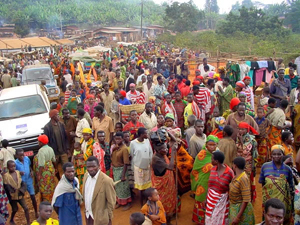
In order to reduce the risk of HIV infection and improve access to HIV-related prevention, treatment, care and support of refugees, UNAIDS in collaboration with one of its Cosponsors, UNHCR, has developed a new policy brief that focuses specifically on actions required to prevent HIV and mitigate the effect of HIV on refugees and their host communities.
The policy brief focuses on emergency and post-emergency phases and suggests actions for governments, civil society and international partners in order to ensure that refugee and human rights laws are applied, and that the needs of refugees are included into national HIV policies and programmes.
All photo credit: UNAIDS
Documents
The development of programme strategies for integration of HIV, food and nutrition activities in refugee settings
15 February 2007
In 2003 UNHCR, WFP, and UNICEF launched a joint effort to develop, through multi-site field research in refugee communities in Africa, a set of strategies for using food and nutrition-based interventions to support HIV transmission prevention, impact mitigation, and care, treatment, and support for people living with HIV. This important collaborative initiative grew out of the recognition that refugee settings are unique. It was recognized also that specific research is required conducted among and with refugees. This Best Practice document discusses the research process and findings of this interagency initiative.

